Why do strawberries and strawberries curl leaves and what to do?
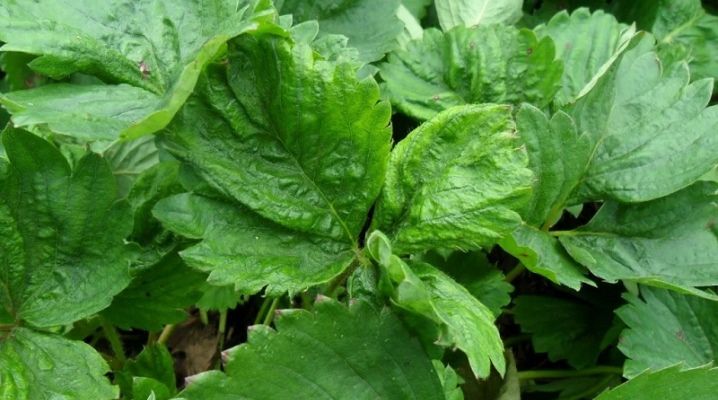
Strawberries are juicy, tasty and healthy berries that both adults and children like. However, sometimes the leaves on the bushes begin to wrinkle and curl - such symptoms indicate unhealthy plants. Today we will introduce you to a description of the causes of deformation and tell you what to do in this situation.
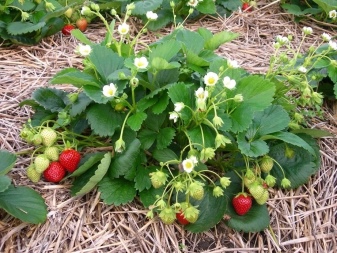
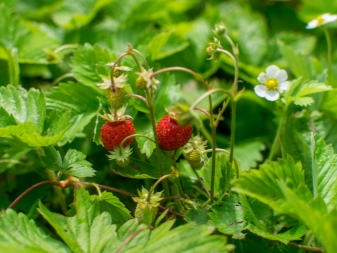
Violations of agricultural technology
Strawberries are considered a favorite summer treat. Therefore, any gardener begins to worry when healthy green bushes curl up in a boat and dry. Quite often, strawberry leaves begin to deform - this can happen due to a variety of factors. In most cases, the causes of deformation of sheet plates are explained by errors in agricultural technology:
- old bed;
- dryness of the substrate;
- nutritional deficiencies;
- lack of crop rotation;
- burns with chemicals.
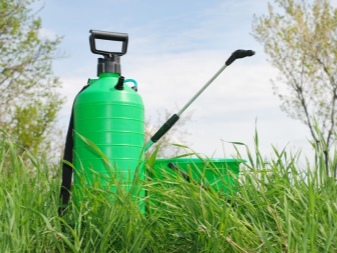

The longer the crop sits in the same place and the older the bushes become, the more twisted bushes appear and the lower the yield will be.
The period of active fruiting of a strawberry plant is only 3-4 years. Therefore, every 4–5 years, the plantation must be rejuvenated and the young growth must be transplanted to a new site.
Each strawberry bush produces a decent harvest, but it requires a lot of food and water to do so. If the plant lacks nutrients and is thirsty, it stops developing. This is especially clearly seen on adult leaf blades, when a brown border appears at the edges, it leads to complete drying.
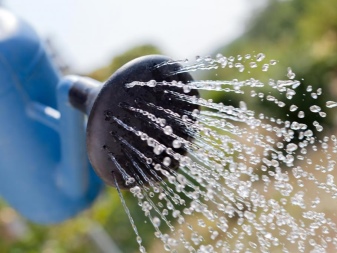
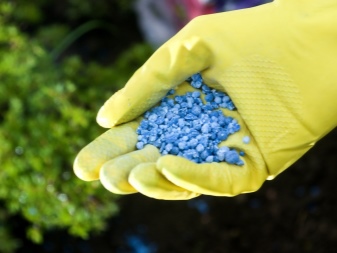
All these unpleasant consequences can be avoided if you adhere to simple rules.
- Acidic soils with a pH of 5 or less must be deoxidized, otherwise they will poorly assimilate nutrients.
- Before planting, the soil must enrich with nutritious macro- and microelements, and also apply organic fertilizers.
- You should not carry out a thickened landing, you should regularly get rid of antennae and weeds. Otherwise, the competition for nutrients will deplete the fruit-bearing bushes.
- Every year, the culture requires additional feeding, they are carried out three times per season.... The plant responds well to foliar spraying.
- The soil in the root zone should be moderately moist.... In dry weather, strawberries require regular, abundant watering. At the stages of bud formation, flowering and fruiting, watering is carried out through a drip system or by overflow, sprinkling is fraught with the appearance of rot.
- To increase the resistance of strawberries to drought and other harmful influences, from time to time, treatment with solutions of growth stimulants is recommended: "Epin" or "Zircon".
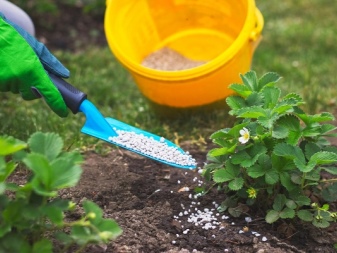

Diseases and their treatment
If the leaves of garden strawberries have curled up, become shriveled and deformed, this may be associated with diseases. Most often, powdery mildew and virus damage lead to such consequences.
Powdery mildew can be identified by the presence of whitish cobwebs on the stems and the back of the leaf blades. Shortly thereafter, the leaves begin to twist and dry out. This leads to the suspension of budding and berry formation. A diseased plant smells of mold, its mustache quickly dies off, putrefactive processes are activated. If you do not take action in a timely manner, the disease will progress and move to neighboring bushes.
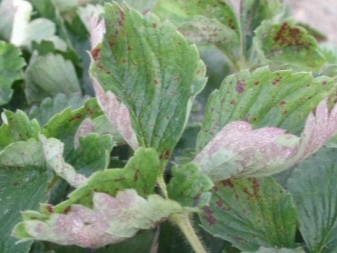
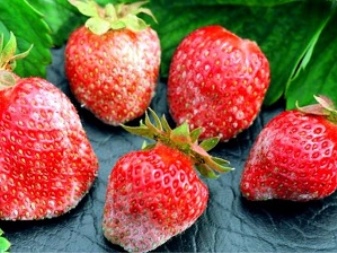
Powdery mildew development is promoted by:
- thickening of landings;
- excess nitrogen-containing fertilizers;
- excessive watering;
- the presence of weeds;
- planting infected seedlings.
In the early stages, fungicide treatment helps to get rid of powdery mildew. The drug gives the greatest effect "Forecast"... For prophylaxis, twice a year, it is necessary to process the soil and bushes with copper sulfate, diluted at the rate of 20 g of the drug per 10 liters of water. To ensure maximum adhesion of the product to the surface of the sheets, a little soap is added there.

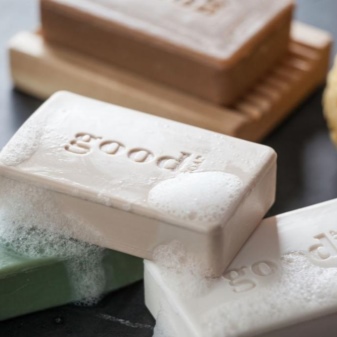
Important! You can use fungicides only if the strawberries have not begun to bear fruit. Otherwise, toxic components will penetrate the fruits, and the berries will become unusable.
Bioactive preparations, for example "Iskra Bio", have a more gentle effect.... Strawberries are processed with this composition 3-4 times with a regularity of 10-14 days. Biological products do not harm a person, nevertheless, after such processing, it is better to consume berries no earlier than after 5 days. Viruses often cause curling and drying of strawberry leaves. Such pathologies are not cured. When the first signs of a disease appear, the plants must be dug up and burned. In most cases, the deformation of the leaf plates begins with wrinkles and mottling, as well as with a virus-like infection of mycoplasma.
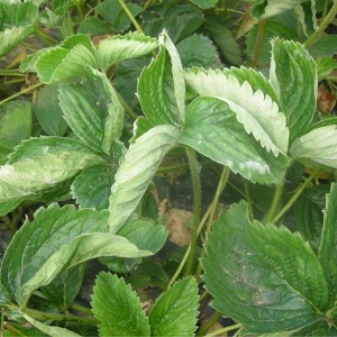
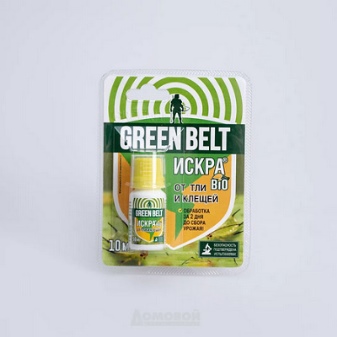
When infected with viruses, the casting of strawberries becomes stained, wrinkled, and then curled up in a boat. The berries become small, and the yield of the bush drops sharply to 40%. Most often, plants get sick at 3-4 years of development, so regular rejuvenation of plantings is considered the most effective way to prevent the disease. One of the most dangerous viruses is late blight. It spreads very quickly and can destroy the entire crop in a matter of weeks. The first symptom of the disease is purple spots on the fruits, the berries become tough and bitter in taste. After that, the lesion spreads to the stems and leaf plates, and the plant dies.
Late blight cannot be defeated, but its appearance can be prevented. The virus is very fond of high humidity, so the disease often occurs with excessive watering. An effective preventive measure will be the timely collection of dry foliage, excess tendrils and diseased berries.
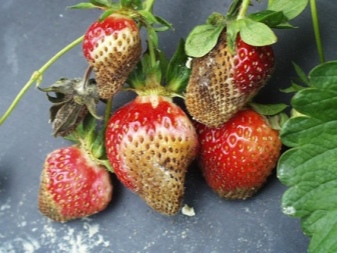
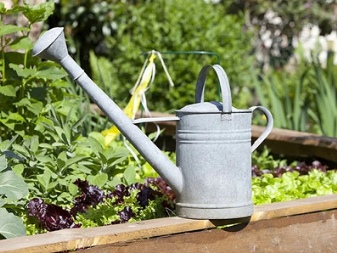
Pest control
Leaves on garden strawberries can curl when attacked by pests. Most often, the culture is affected by aphids and mites.... Tiny aphids are very dangerous for plants. It multiplies quickly, therefore, in the absence of timely measures, berry bushes die in a matter of weeks. Tiny beetles of black and green flowers form entire colonies on the back of leaves, stems and young buds.
They use plant juices for food, so the affected strawberry leaves curl up in a boat and dry out. This leads to wilting of flowers, ovaries and berries. If you notice aphids, then you need to treat the plants with chemicals: Aktara or Intravir. A good alternative to a fungicide is a bioactive drug Fitoverm.
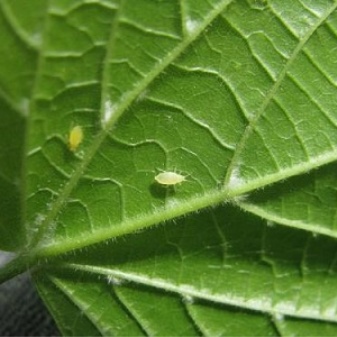
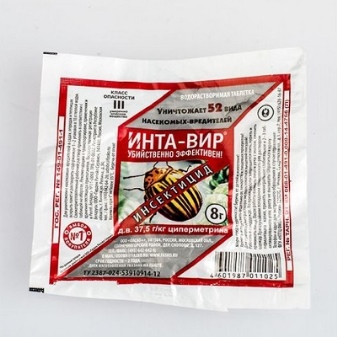
Folk remedies give a good effect in the early stages of defeat:
- a mixture of ash and tobacco powder - it is generously sprinkled with strawberry plantations;
- infusion of tomato tops - prepared at the rate of 3-4 kg of greens per bucket of liquid, the resulting mixture must be boiled, diluted with water in a ratio of 1 to 3, add a little soapy substance and spray the bushes;
- infusion of potato tops - prepared in the same way as tomato;
- decoction of yarrow and chamomile;
- a weak solution of vinegar - Dilute 20 ml in a bucket of water and process strawberry leaf plates.
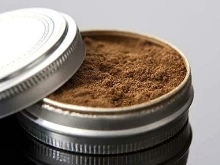
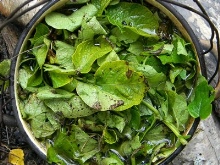
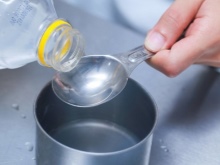
Another dangerous pest that can damage both young and adult bushes is mite... Despite its microscopic size, this insect is highly fertile. In addition, the larvae have an extremely short growth period.Under favorable weather conditions, up to 4–5 generations of this pest can appear on a strawberry bush in one season.
Spider mites and strawberry mites can be found on strawberries.
- Spiderweb - painted in burgundy and crimson colors, a thin web is emitted through the gland.
- Strawberry - are smaller, do not produce cobwebs. It is impossible to see them with the naked eye.


You will notice the unfavorable consequences of the activity of pests immediately:
- strawberry leaves become compressed and wrinkled;
- oily spots appear on the leaf blades;
- buds and young flowers dry up;
- berries become smaller and stop developing.
Sometimes bushes affected by a tick give one crop. But later the leaves dry up and stop developing, in the fall such a strawberry dies. And even if it survives to frost, it completely freezes over the winter. Ticks cause significant damage to plantings, therefore, without a prompt response, the entire berry plant is destroyed. Spraying with drugs is used to combat the pest. Karbofos, Morolex and Fufanon. Processing gives a good effect colloidal sulfur. However, these methods can only be used if at least a month is left before fruiting. In all other cases, it is better to use bioactive Fitoverm or Tiovit Jet.
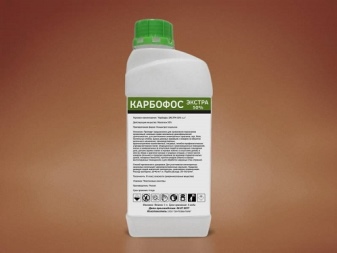
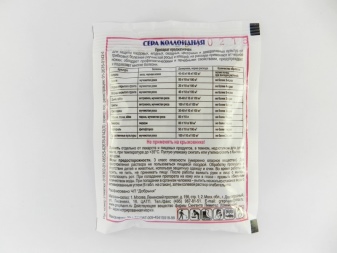
More environmentally friendly folk methods:
- infusion of onion peel - within 3-4 days the husk is insisted, filtered, and then sprayed with strawberry bushes;
- scalding strawberries with hot water heated to 60 degrees, - the measure is effective only in early spring, when the plants are just appearing in the garden;
- spraying with infusion of garlic - the green parts and the head of garlic are crushed, poured with warm water, infused for 3-4 days and filtered.
Experienced gardeners recommend alternating folk remedies with chemical treatments. In this case, the effect will be maximum, since ticks very quickly develop resistance to any means of fighting them.
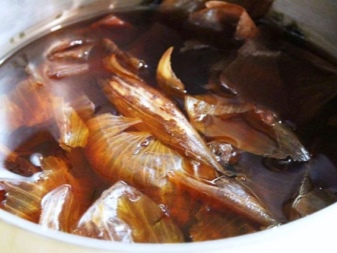
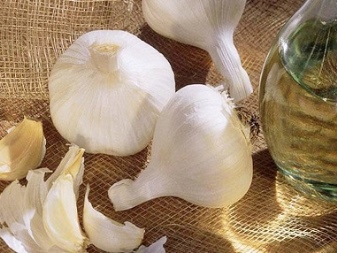
Prevention measures
It is very disappointing when strawberry beds begin to suffer due to unscrupulous care and mistakes of the owners of the site. To prevent the destruction of the plantation, you should adhere to the basic recommendations.
- Allocate only the best, well-lit areas for planting... On acidic soils, strawberries grow poorly, therefore, fluff lime or dolomite flour must be added to such soils.
- The best irrigation option will be the drip irrigation system. It is better to exclude sprinkling, as it leads to the appearance of fungal rot.
- It is important to regularly weed and trim the mustache... Every three to four years, the bushes are rejuvenated and transplanted to a new place. The longer you operate the plantings, the more often you will encounter twisting and wilting of the plant.
- It is advisable to purchase bushes from reliable sellers, be sure to inspect the seedlings when buying.
- Follow the plant feeding schedule. Nutritional deficiencies should not be tolerated, but an excessive amount of nutrients is dangerous.
- Be sure to carry out all necessary preventive treatments, for this, copper sulfate or Bordeaux liquid is used.
- When using chemicals, you must follow the instructions exactly. Any excess of the norms leads to burns.
- To prevent the appearance of pests, gardeners often plant plants with a strong aroma around the perimeter of the garden or in the aisles: marigolds, garlic, chamomile or calendula.
Preventive measures are considered the best way to protect strawberries and garden strawberries from kinking. By following these simple rules, you will save the bushes from disease and will be able to enjoy a rich harvest of sweet juicy berries.
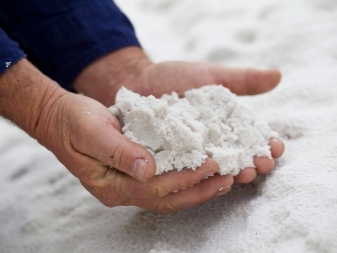
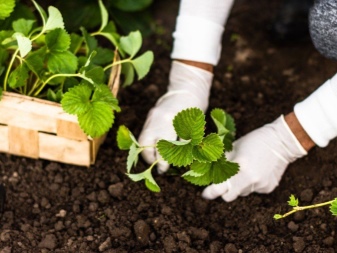













The comment was sent successfully.